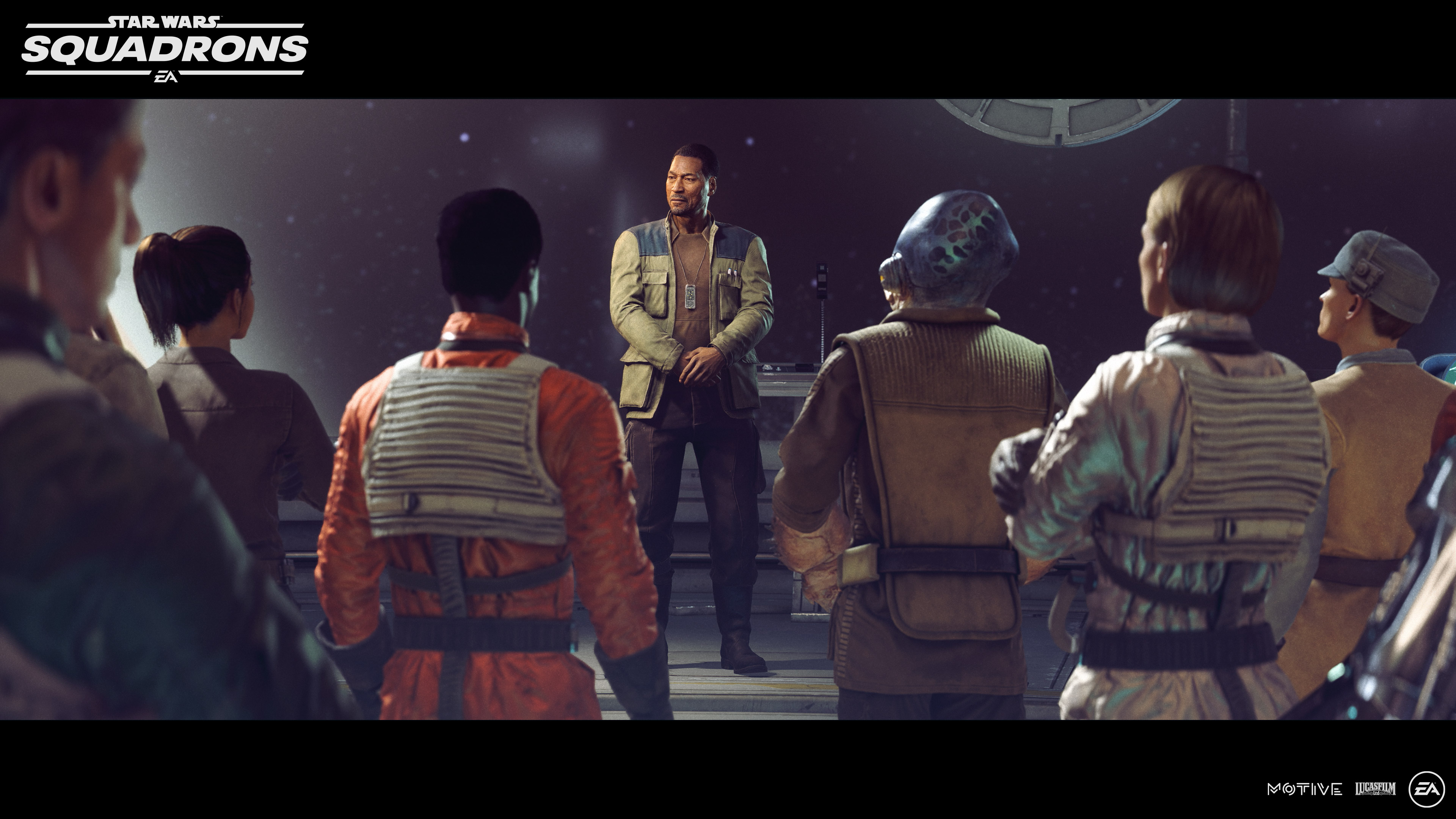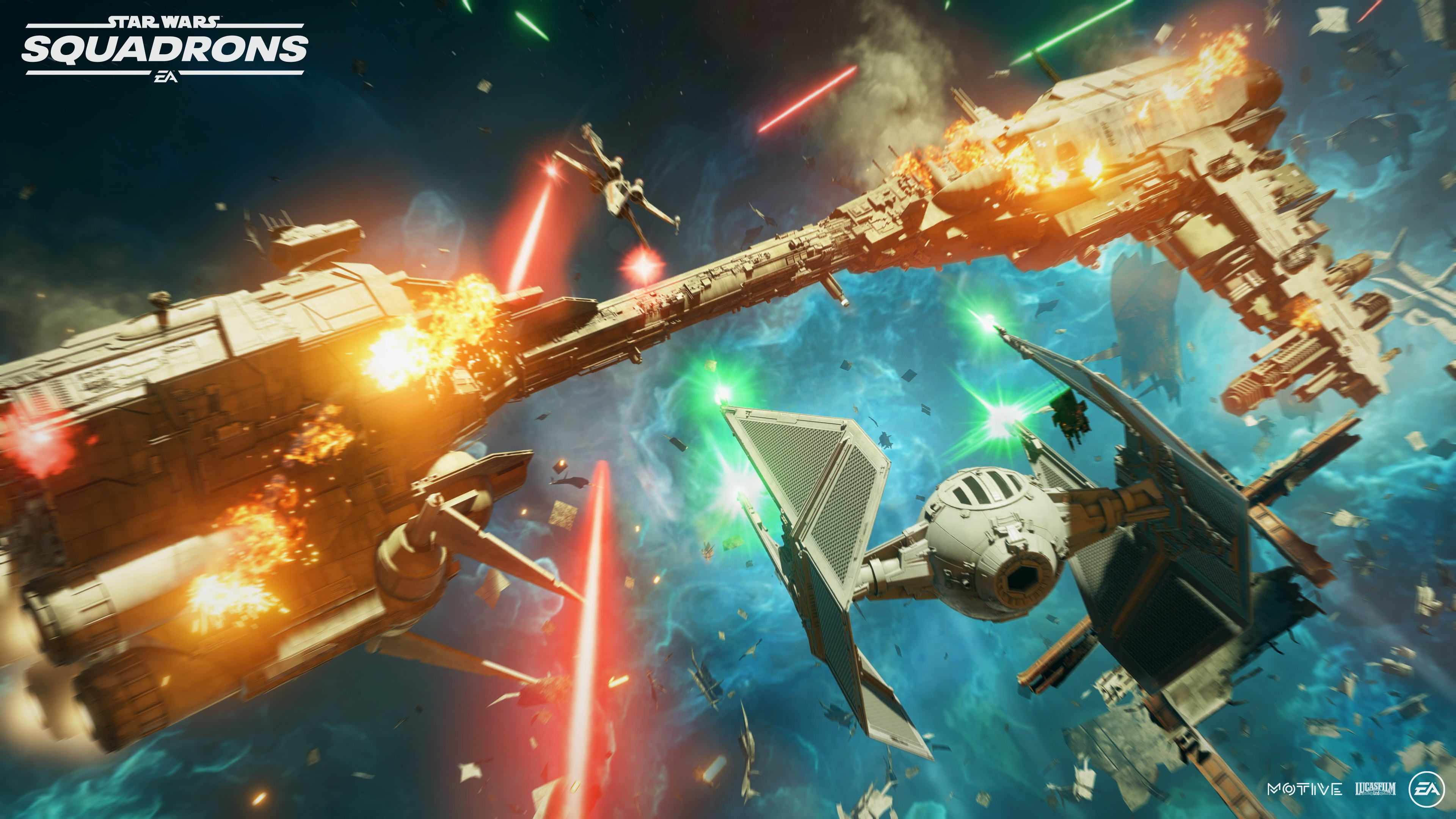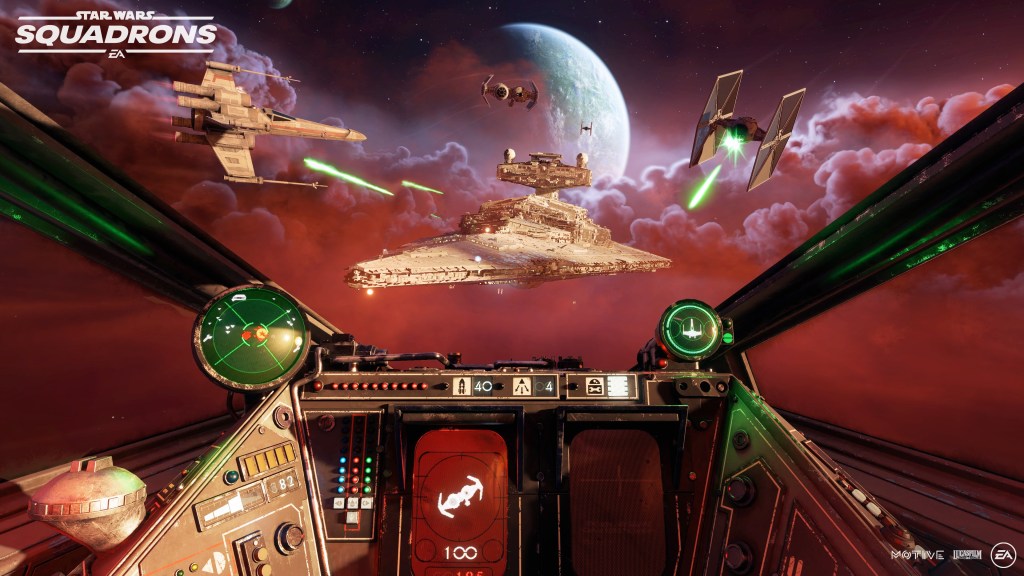I have “my” Star Wars. You probably have yours. Mine was built on the original trilogy, the early Expanded Universe novels from Timothy Zahn, and the X-Wing series by LucasArts flight sim legend Lawrence Holland and the studio that was eventually known as Totally Games. The movies might have been pure fantasy, but for me that universe became a stage for military sci-fi, an approach to Star Wars that finally took center stage with the Clone Wars cartoon.
Like a lot of people, my feelings about the franchise and the games it inspired have waxed and waned over the years, and there are certainly moments I can point to as representing a time when Star Wars was good and each Star Wars game was a potentially genre-defining event. I could also tell you the exact moment when it all went to hell, when I saw it become trivial and the games turned into cynical cash-ins. Other people might share these moments, but about completely different movies and games. For me, “They don’t make them like that anymore!” is something that means TIE Fighter or Rebellion, for you it could be Republic Commando or Rogue Squadron. Star Wars is funny this way: certain experiences are almost universal for a lot of the fandom, but their reference points are not. This is the baggage that Star Wars: Squadrons ends up carrying: it is a self-conscious throwback, but to what? I’m still not entirely sure.
Videos by VICE
Star Wars: Squadrons feels like a game of discrete parts with discrete influences, easier to triangulate than describe. The new space dogfighter from Motive and published by EA draws a lot from the classic X-Wing series of the 1990s, particularly the before-its-time multiplayer of X-Wing vs. TIE Fighter. But the multiplayer space combat of Squadrons owes a lot to the likes of World of Warplanes or War Thunder, with a bit of MOBA-style map control tossed in for good measure. The detailed, varied maps owe a lot to the Rogue Squadron games. The starfighters you pilot, though familiar from decades of Star Wars movies and games, are heavily customizable in ways that are more reminiscent of modern team shooters or the X-Wing board game than any of their earlier video game adaptations. All the gadgets and tools available to each spacecraft are unlocked through a (microtranscation-free) progression system so that the longer you play, the more options you have. The campaign serves partially to tutorialize a lot of these systems, but also hearkens back to the Wing Commander series as you hang out looking at detailed backdrops of briefing rooms and hangars, clicking on characters to hear what’s on their mind.
Parts of Squadrons are very good, and parts of it feel like the work of an earnest but inexpert apprentice. Its single-player campaign doesn’t flatter its dull AI pilots, whose chief tactic appears to be flying in flocks and engaging in head-on, guns-blazing charges directly at the player. The X-Wing series was very good at creating elaborate and convincing space battles that felt like they were being fought by distinct units with distinct objectives, but Squadrons can’t quite disguise the ways in which its campaign is a very flashy shooting-gallery. I’m not far enough into the campaign to say whether the story can make up for these deficiencies, but so far I’d say its characters are more grating than compelling, which means a lot of the narrative trappings are going to waste for me.

The dull AI made me wonder if the design of these starfighters wasn’t also a bit dull, since there seemed little to do beyond dodge incoming fire, then methodically wipe out enemies from behind. However, against human adversaries in multiplayer, the ships suddenly felt lively and distinctive, each with its own fighting characteristics necessitating different tactics. Rather than feeling trapped in a bubble, shooting at AI drones as they flashed past, I was engaged in taut game of cat-and-mouse. Hunting enemy starfighters through chaotic asteroid fields or shipwreck-haunted battle sites felt like some of the coolest stuff I’ve ever done in a Star Wars game.
It also hinted at the ways in which Squadrons is far, far more complex than it first appears. The game is cross-play enabled across PC, Playstation, and Xbox and at first it seemed like a game that was easily tuned for a controller. It supports joysticks and a throttle-and-stick setup like my Saitek X-55 but at first this seemed like mere affectation, another nod to the legacies that shape Squadrons. But after a few multiplayer sorties, I was less sure.
There are the familiar power-systems to manage as you balance energy available to weapons, shields, and engine. But there are also engine “boosts” you can trigger if you throw everything at the engines, a lot of options for setting your targets, countermeasures, special weapons with secondary fire modes… there’s a lot to manage if you’re going to get the most out of your fighter and whatever control system you’re using, you’ll have to get comfortable with swiftly navigating control combinations and menus. In many ways the game is asking you to make more decisions at a faster pace than the old X-Wing games ever did. It’s a smart decision: part of selling the fantasy of piloting a sci-fi war machine is making sure players have lots of systems to manage and buttons to press. It’s a bit chaotic, but it also made me feel like an ace pilot when I was min-maxing my ship throughout a battle, getting exactly the performance I wanted at the moments I needed it.
There are two multiplayer modes. One is a straightforward five-on-five Dogfight mode where you’re basically racing to a set number of kills. The other is Fleet Battles, where a force of Imperial and New Republic capital ships duke it out across a map as their fighter screens vie for advantage. One one side racks up enough momentum and it gets a cue to attack the enemies smaller capital ships, which basically function like towers in a MOBA game. They are imposing enough with their defensive firepower, but a few coordinated attack runs will bring them down. However, as the attacking side takes losses, the momentum swings and suddenly the match flips and the attackers have to fall back and play defense, and the defenders take over the attack role. This goes until one of the two flagships is destroyed.
Here in this objective-centered mode, ship class and teamwork play a larger role. The heavy bombers fielded by each side frankly suck in a dogfight, but they have the capacity to quickly demolish enemy capital ships if they can just maintain pressure on offense. But they need effective cover from the fighters and interceptors around them… and probably a gameplan for what to do if that cover disappears.
It was great fun in the few missions I got to fly during a limited-window availability for multiplayer put together by EA and Motive earlier this week. But I’m not sure how the simple dynamics of Fleet Battles will wear over time. There are different maps, but those maps don’t quite do the same thing that a different map in Battlefield does for Rush mode, for example. I liked experimenting with different ships and loadouts, and seeing which tactics worked well, and the combat was intense, but my experience with games like World of Warplanes taught me that this kind of gameplay will get stale without variety in match structure or vessel.

I have a lot of concerns about how Squadrons will wear over the long haul, but I’d be kidding you if I said I’m in a mood to be discriminating about a space combat sim. I’m not sure it’s going to hold up the way some of the all-time greats like Freespace 2 or TIE Fighter do, but that’s a loaded comparison. Those were entries in an established and flourishing genre, built for a PC audience for whom those games were mainstream. By some measures, it’s been about 20 years since we had anything remotely like Squadrons, and if you felt their lack over all those years, I suspect you’ll forgive Squadrons an awful lot.
Right now, I’d say the game that Squadrons reminds me of the most is the original X-Wing. It started the run of classic space combat games from LucasArts, but looking back on it, I don’t think it was itself a classic. Its campaigns were dull, and it had so few ship types and such low unit counts that it could never suggest anything larger than a skirmish. TIE Fighter fleshed-out what was there, introduced more variety and found ways of telling stories across each mission. The Wing Commander series likewise had the benefit of drawing from an increasingly sophisticated series of templates. Cult-favorites like Colony Wars or genre high-water marks like Freespace 2 had rich design traditions they could draw from, and an audience that was familiar with them.
Squadrons is trying to connect with people who remember and revere those games, and with people who missed them entirely. But a bit like X-Wing back in 1993, it’s starting from scratch. It’s a new take on old ideas, in a new era, for a new audience. It’s a strong beginning, but a beginning nonetheless.




